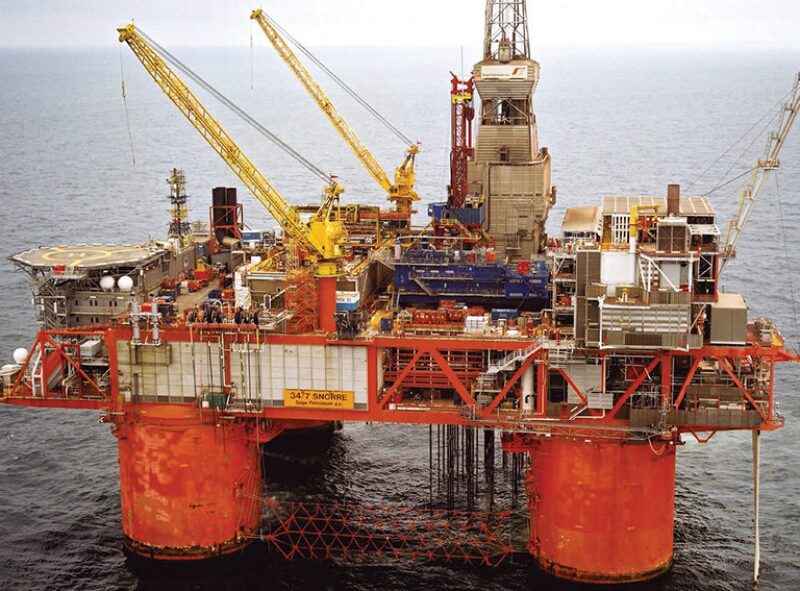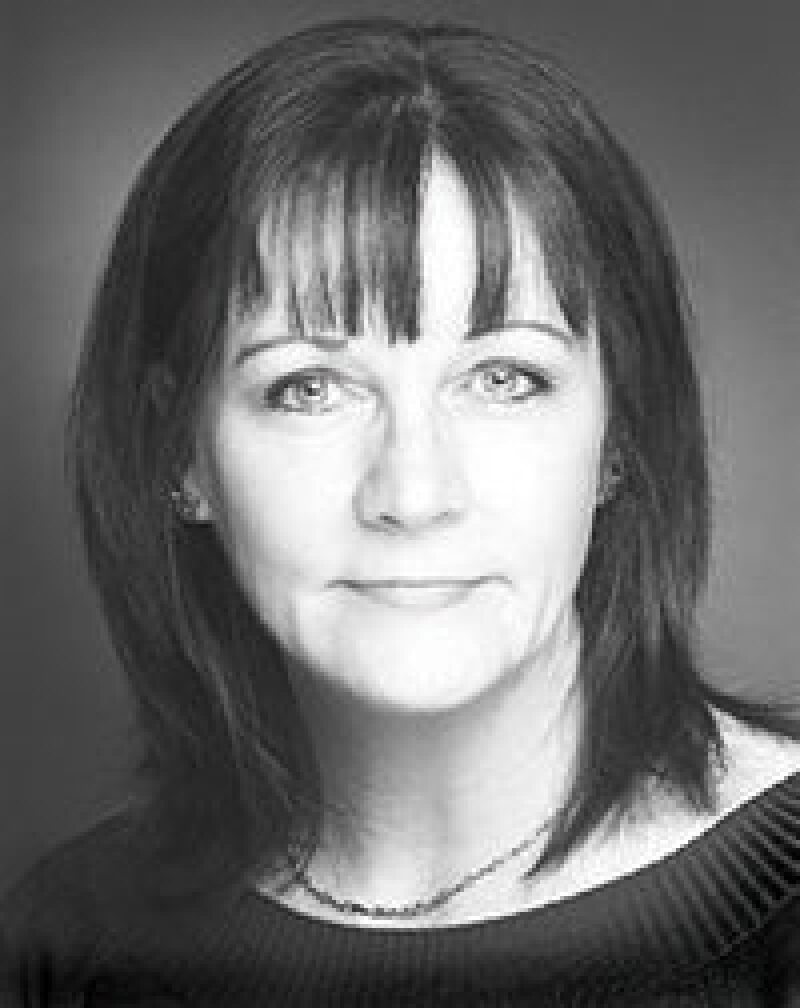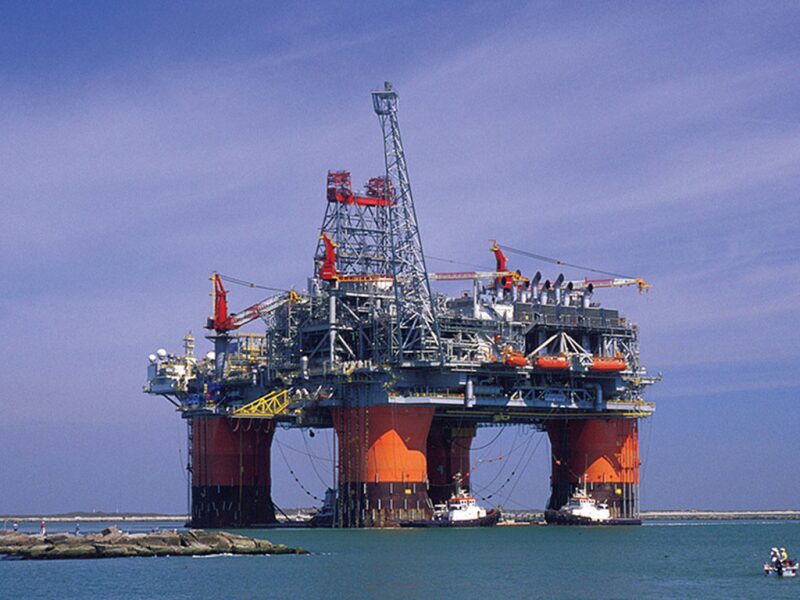Perhaps the biggest opportunity in the oil industry lies in getting more out of existing wells. Changing the salinity of injection water using desalination technology could make the difference.
The market for low-salinity (low-sal) water could be set to ramp up as BP goes ahead with the installation of its Clair Ridge platforms in the North Sea, which are scheduled for completion in 2015, with first oil expected in 2016.
The company will be adopting its LoSal EOR (enhanced oil recovery) at this greenfield site from Day 1 as a secondary waterflood, bringing low-sal water technology out of pilot status and into commercial application.
It is likely that the success of low-sal water injection in the next 10 to 15 years will depend largely on what happens at Clair Ridge. If the project starts on time and achieves the expected injection rates, one source of uncertainty will be eliminated. It could also mean that this first generation technology’s operational effectiveness is not far removed from the more established field of sulfate rejection membranes—good news for the low-sal market.
BP expects about 640 million bbl of oil to be recoverable over the 40-year life of the platforms. Of that amount, about 42 million bbl are expected to be the result of applying LoSal EOR. Located to the west of the Shetland Islands, the Clair field is estimated to contain more than 6 billion bbl of original oil in place (OOIP). The company has earmarked USD 120 million to equip the platforms with desalination equipment (production capacity of 145,000 B/D) to process seawater with ultrafiltration technology, which is protected upstream by a pretreatment step of nanofiltration/reverse osmosis to minimize space and weight.
LoSal EOR is part of BP’s suite of Designer Water EOR technologies (which includes Bright Water) that have been developed under the company’s Pushing Reservoir Limits flagship program, a key component of its strategy for achieving radical increases in economic oil recovery by using existing well stock to improve pore scale displacement (the removal of oil trapped within a pore or a group of connected pores). The Clair Ridge project is the second phase of the field’s development, and the world’s first offshore project to use low-sal water to increase oil recovery. It is expected to extend the productive life of the greater Clair area beyond 2050.
Mad Dog Phase 2 in the Gulf of Mexico (GOM) is targeted for BP’s second commercial LoSal project with the final decision on capital expenditure expected to be made in 2013, and first oil production projected for 2020. Another four projects are currently being evaluated, and industry insiders say that Thunder Horse in the GOM is likely to be among them. However, the United States Environmental Protection Agency’s recent announcement of temporary suspension of more BP contracts in the country may affect activity in that area.
Shell, a joint venture partner on the Clair Ridge project (through subsidiary companies Enterprise Oil and Shell Clair UK) has been working on scaling up low-sal technology with trials in its Omar and Sijan fields in Syria (operated by Shell subsidiary Al Furat). Shell has also been reported to be evaluating the Ursa field in the GOM for commercial application of low-sal water technology, following the introduction of secondary recovery with a sulfate removal membrane unit and facilities for water treatment in 2008.
In 2011, Shell’s team leader for improved oil recovery (IOR), David Brooks, indicated that Ursa was being considered for a low-sal project, while Shell projects and technology director, Matthias Bichsel, spoke publicly about converting the field to low-sal, although the company has yet to confirm.
In Norway, Statoil is considering the offshore Heidrun, Snorre, and Gullfaks fields for low-sal pilots. Saudi Aramco is conducting tests on the effectiveness of its low-sal water technology (SmartWater) in carbonate reservoirs and has reported positive results.
The movement in low-sal applications is creating a buzz in the oil industry. “There’s a tremendous amount of interest and amount of activity championed by BP,” said Gary Pope, director of the Center for Petroleum and Geosystems Engineering at the University of Texas at Austin. “It’s amazing how much they’ve achieved and how much impact it has had so far.”
Success Hinges on the Economics
As low-sal water technology moves out of the testing phase and into the market, its future will depend to some extent on the success of its implementation at Clair Ridge. The North Sea application will be a showcase for what low-sal water can do for incremental oil recovery, and what kind of return on investment it offers. Starting the project on time, achieving the targeted injection volumes, and decreasing downtime on the membrane facility will be the key factors in determining its success.
The economics of oil production are time-sensitive, and a delay in the startup or downtime on the injection schedule inevitably affects the project economics. An early indication of project success—before the enhanced production volumes become known—will come when BP publishes its injection rates. If the injection rates meet the targeted rates, it will indicate that the technology is reasonably deployable.
Another element to watch will be oil market prices. Even with success at Clair Ridge, the market for low-sal water technology is tied to that of EOR, which is directly linked to the price of oil.
The need to extract more oil from existing resources drove EOR’s growth over the past 10 years and companies’ research and development of EOR technologies. However, this would not have happened without the rise in oil prices since the late 1990s.
Companies base their rationales for the increased costs associated with applying expensive EOR technologies to oil production on the price of oil remaining between USD 60/bbl and USD 100/bbl. Higher oil prices have generated more money for EOR research, and the oil majors now boast expanded suites of technologies designed to improve secondary and tertiary recovery rates. There is more growth ahead for EOR in general and low-sal water technologies in particular, assuming that the price of oil at least holds steady.
The general view among industry experts is that all forms of IOR and EOR will continue increasing along the same trend established over the past 5 years. The extrapolation provides a reasonable estimate, as long as oil prices remain relatively high. EOR technologies are driven by oil prices and require a certain threshold oil price to remain economically viable. If oil prices stay high, the market will continue to see increased activity within the range of EOR technologies, which could translate into an upward trend for low-sal applications.

NOCs Take a Closer Look
Increased EOR activity is translating into greater volumes of oil production. “There are hundreds of thousands of barrels per day being produced from carbon dioxide floods, hundreds of thousands more have been produced for decades by thermal methods, and now there are also hundreds of thousands of barrels per day being produced by polymer flooding. Still other methods such as ASP [alkaline surfactant polymer] are coming on fast,” said Pope. “EOR isn’t going to be big; it already is big.”
Bigger income streams from oil production projects mean more money for EOR—including low-sal water— but not all oil producers are locked into the operating margins dictated by oil prices.
EOR is attractive to national oil companies (NOCs). NOCs have the remit of developing resources for sustainability, and with more hydrocarbon resources at their disposal than independent oil companies (IOCs), the projects they put in the field are a potential source of demand for low-sal water.
IOCs wanting a piece of this action need an EOR technology portfolio. As an industry observer explained, “The independent oil companies are looking to be the partner of choice with the NOCs, and one way to do that is to demonstrate that they have the technology. They’re going out there and publicly demonstrating that they have the technology in the hope that the NOCs will pick them up as the partner of choice.”
This is good news for the low-sal market. The emerging technology has already been taken up by Petronas, the Malaysian national oil company, which will use low-sal water on two brownfield projects scheduled over the next 2 years. One is a joint venture with Malaysia International Shipping for a full field chemically enhanced oil recovery (CEOR) project at the Angsi oil field in the South China Sea. The other is a partnership with Shell to run a low-sal CEOR pilot at St. Joseph field (off Sarawak) before full field implementation.
Combined EOR Technologies Offer Synergies
With the price of oil spurring growth in demand for EOR technology, a high-profile showcase project at Clair Ridge coming on stream within 4 years, and the NOCs already taking notice, the questions are: How big will the market for low-sal water get, and how long will it take to get there?
The answers to the questions are not good news—except to the water treatment companies that know how to deal with them. Industry experts are quick to point out that the applicability of low-sal water is expected to be relatively limited. Globally, there is a handful of oil companies that have portfolios with reservoirs where a low-sal waterflood would make sense. Some industry opinion holds that targeting appropriate reservoirs for low-sal applications is made problematic because the mechanism by which low-sal water works is not entirely understood—one of the key factors limiting its adoption.
Others in the industry see it differently. According to one observer, “I think the mechanism is relatively well understood. What isn’t so well understood is the range of oil properties, rock composition, and water composition where you’ll get the benefit. To assess this accurately requires a very strong reservoir engineering capability.”
The ability of low-sal water applications to link up with other more established EOR technologies, such as steamflood, polymer flood, and ASP, could alter this situation. Depending on an operator’s choice of economic trade-offs (e.g., a higher cost on chemicals, but better sweep vs. spending less on chemicals, but obtaining less oil), there could be circumstances under which low-sal water would lose out to other competing EOR technologies. Research shows however, that low-sal water is potentially a support platform for the same suite of technologies with which it might otherwise compete. The Malaysian projects will be the first to commercially apply this approach.
The research continues with BP’s most recent work in polymer-assisted LoSal (PAL) as a new application. Pope explains the effect of putting low-sal water together with polymer flood technology. “It’s just now starting to evolve in that direction. It’s being talked about, proposed, written about, but it made sense from the very beginning. It combines two things in a synergistic way that makes perfect sense, because you now have the effect of the low-sal and the mobility control [of polymer flood], so you get a much higher percentage [of OOIP].”
It is also economical, as shown by Mohammadi and Jerauld (2012). Combining low-sal water (using the LoSal EOR technique) with the mobility control available with polymer flood yielded a higher percentage of incremental oil. At high oil viscosities, the combination showed incremental oil recovery approximately equal to the sum of each EOR technique when used separately. Furthermore, it improves project economics and reduces the cost of required chemicals by a factor of five.
Low-sal water is going to be a tricky market, and as industry experts point out repeatedly, one that is impossible to meaningfully predict. Although it is unlikely to provide a bonanza for seawater desalters looking for work while they wait out flat periods in their core market, it will be a lucrative niche for specialist membrane technology companies that understand the oil field and can work to its long-term project time frames. Those with flexibility and a range of water treatment options will find opportunity to be had and money to be made in low-sal water.
For Further Reading
SPE 153161 Mechanistic Modeling of the Benefit of Combining Polymer with Low Salinity Water for Enhanced Oil Recovery by H. Mohammadi and G.R. Jerauld, BP.

Gina Rowland is the produced water group manager at Global Water Intelligence. Working closely with industry experts in desalination and produced water, she is responsible for identifying and implementing seminar opportunities in water treatment, especially those associated with the production of oil and gas. A version of this article was published in the December 2012 Global Water Intelligence.

